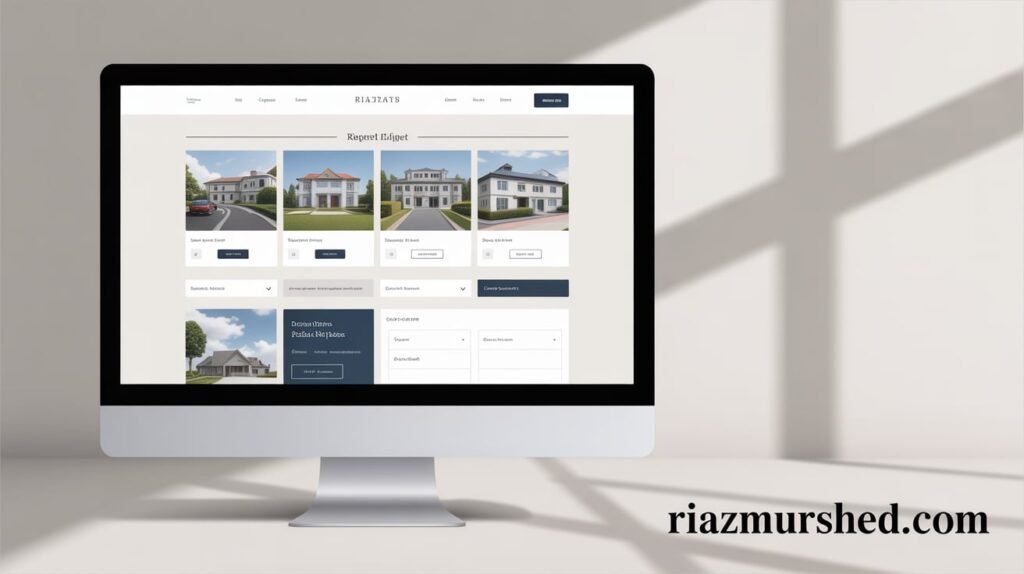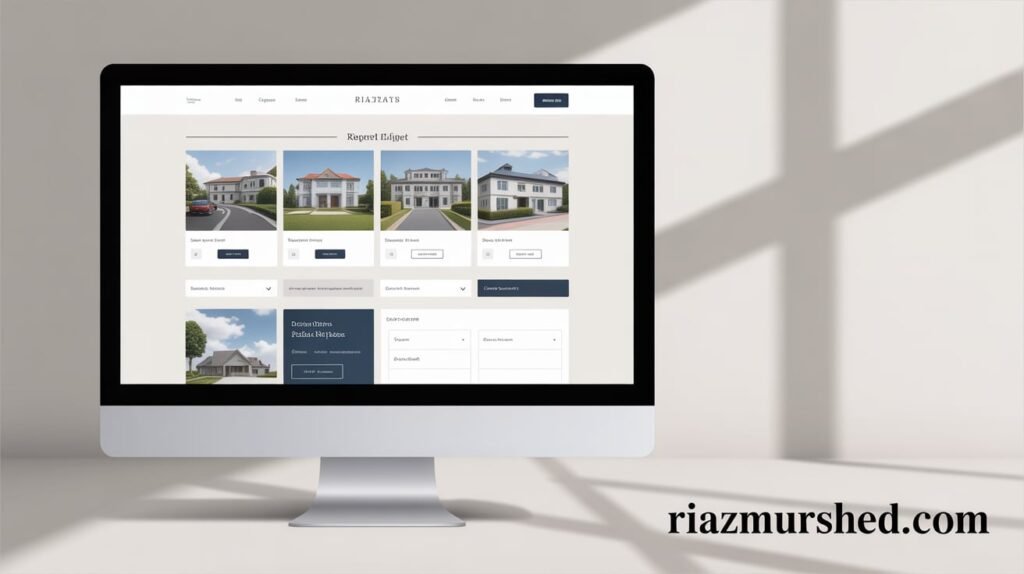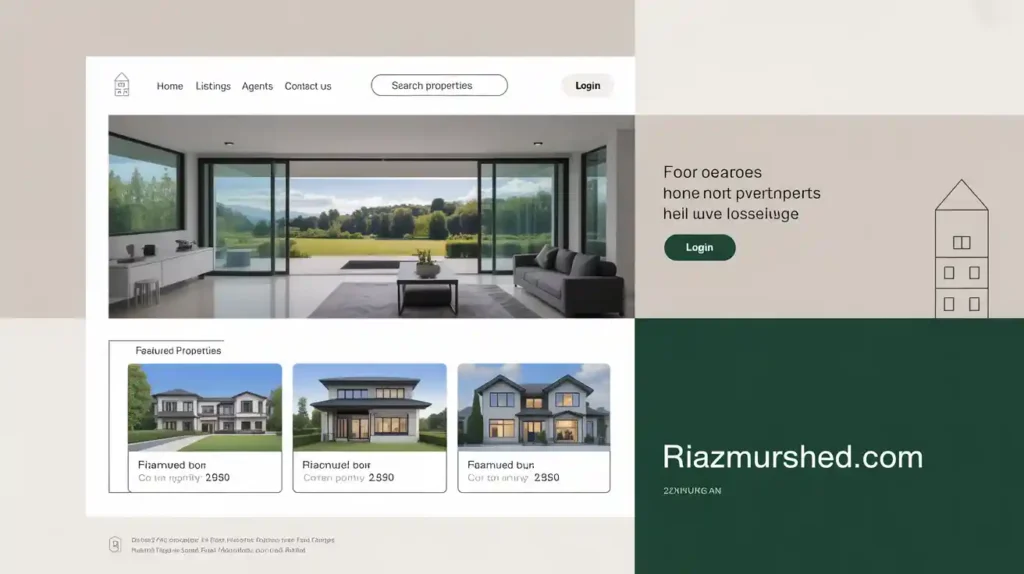Real estate has always been a competitive industry, and in Stamford, UK, agents and property developers must stand out to win clients. The key to capturing attention today is not just through property listings but through a professional, user-friendly website. This is where Web Design for Real Estate becomes essential. An effective website does more than showcase houses; it creates trust, delivers information clearly, and encourages action.
In this guide, we will explore how real estate businesses in Stamford can build stunning websites that attract buyers and sellers. From the essentials of design to SEO, usability, mobile responsiveness, and examples of best practices, you will learn how to elevate your real estate brand online.
Why Web Design for Real Estate Matters in Stamford
A property website is often the first interaction potential clients have with your business. If your site looks outdated, loads slowly, or feels confusing, visitors may leave before contacting you. A well-crafted website communicates professionalism, builds credibility, and simplifies the property search process.
In Stamford’s growing housing market, having a tailored Web Design for Real Estate strategy ensures your business reaches both local buyers and clients moving in from other regions.
Key reasons include:
- First impressions: Buyers often judge agents by their website design.
- User trust: A clean and easy-to-use interface builds credibility.
- Property visibility: High-quality images and virtual tours increase engagement.
- Lead generation: Integrated forms and calls-to-action capture client inquiries.

Core Elements of Web Design for Real Estate
1. Mobile-Friendly Design
More than half of all property searches now happen on mobile devices. A responsive website ensures your listings, images, and maps look perfect on any screen size.
2. High-Quality Visuals
Professional photography, video tours, and even drone footage set your listings apart. Clear visuals help clients imagine themselves in the space.
3. Intuitive Navigation
Organized menus, search filters, and well-structured property categories allow visitors to find listings quickly.
4. SEO-Friendly Architecture
Optimizing your website structure with proper headings, metadata, and schema markup makes your site more discoverable on search engines.
5. Local Content Integration
Highlight Stamford neighborhoods, schools, transport links, and amenities. This builds local relevance and helps search rankings.
Example: A Real Estate Website Done Right
Imagine a Stamford-based agency creating a website with these features:
- A clean homepage showcasing featured properties.
- A quick property search bar at the top.
- Interactive maps for property locations.
- A blog sharing market updates about Stamford housing trends.
- Contact forms and call-back requests on every page.
This setup ensures visitors can find what they need in seconds, increasing the likelihood of inquiries.
Table: Key Features of Real Estate Website Design
| Feature | Why It Matters for Real Estate in Stamford | Example Application |
|---|---|---|
| Mobile Responsiveness | Ensures buyers on phones can browse without issues | Mobile-first design with fast load |
| High-Resolution Images & Videos | Builds trust and emotional connection with buyers | 360° virtual tours for Stamford homes |
| Easy Search & Filters | Saves users time finding the right property | Search by price, location, bedrooms |
| Local Area Guides | Provides value and SEO benefits | Stamford schools, parks, transport |
| Contact Forms & CTAs | Converts visitors into clients | “Book a Viewing” or “Get Valuation” |
SEO and Content Strategy for Real Estate Websites
Web Design for Real Estate must go hand-in-hand with SEO. Without optimized content, even the best-looking website may not bring traffic.
Key strategies include:
- Keyword optimization: Use terms like “Stamford property for sale” or “Stamford homes to rent”.
- Local SEO: Create dedicated pages for Stamford neighborhoods.
- Blog content: Share market trends, moving tips, or property investment advice.
- Schema markup: Helps search engines identify listings and reviews.
Example: A blog titled “Buying Your First Home in Stamford” could target local buyers and establish authority.

Enhancing User Experience
The best websites do more than display properties; they offer a smooth experience. Consider:
- Fast loading speed – Users leave if a page takes more than three seconds.
- Clear calls-to-action – “Schedule a Viewing” or “Request a Free Valuation” must be visible.
- Secure browsing (HTTPS) – Builds trust when users share personal data.
Case Study: Stamford Real Estate Agency
A local agency redesigned its site using a Web Design for Real Estate approach. Within three months, results showed:
- 45% increase in organic traffic.
- 60% more property inquiries via the website.
- Reduced bounce rate from 70% to 40%.
The success came from focusing on usability, SEO, and high-quality visuals.
Tips to Build Trust with Your Website
- Add client testimonials with names and photos.
- Showcase recently sold properties.
- Provide clear agent profiles with contact details.
- Include a FAQ section answering buyer and seller concerns.
FAQ Section
Q1. Why is Web Design for Real Estate important in Stamford?
It helps agents and developers present properties professionally, attract local buyers, and build trust in a competitive market.
Q2. What features should a Stamford real estate website have?
Responsive design, property search filters, high-quality visuals, local content, and strong CTAs.
Q3. How can SEO improve real estate websites?
SEO makes your site more visible in search results, driving organic traffic and qualified leads.
Q4. Can smaller agencies in Stamford benefit from Web Design for Real Estate?
Yes. Even small agencies can attract more clients with professional websites that highlight their unique value.
Q5. What role does local content play?
Including guides about Stamford neighborhoods and amenities increases local relevance and helps with search engine rankings.
Conclusion
Building a professional real estate website in Stamford requires more than just uploading property listings. The integration of design, usability, SEO, and local relevance is what makes a website truly effective. By adopting the principles of Web Design for Real Estate, agencies can build trust, attract more clients, and secure more property deals.
A website is not just an online presence—it is the digital face of your business. In Stamford’s competitive property market, investing in expert web design is no longer optional, but essential.


